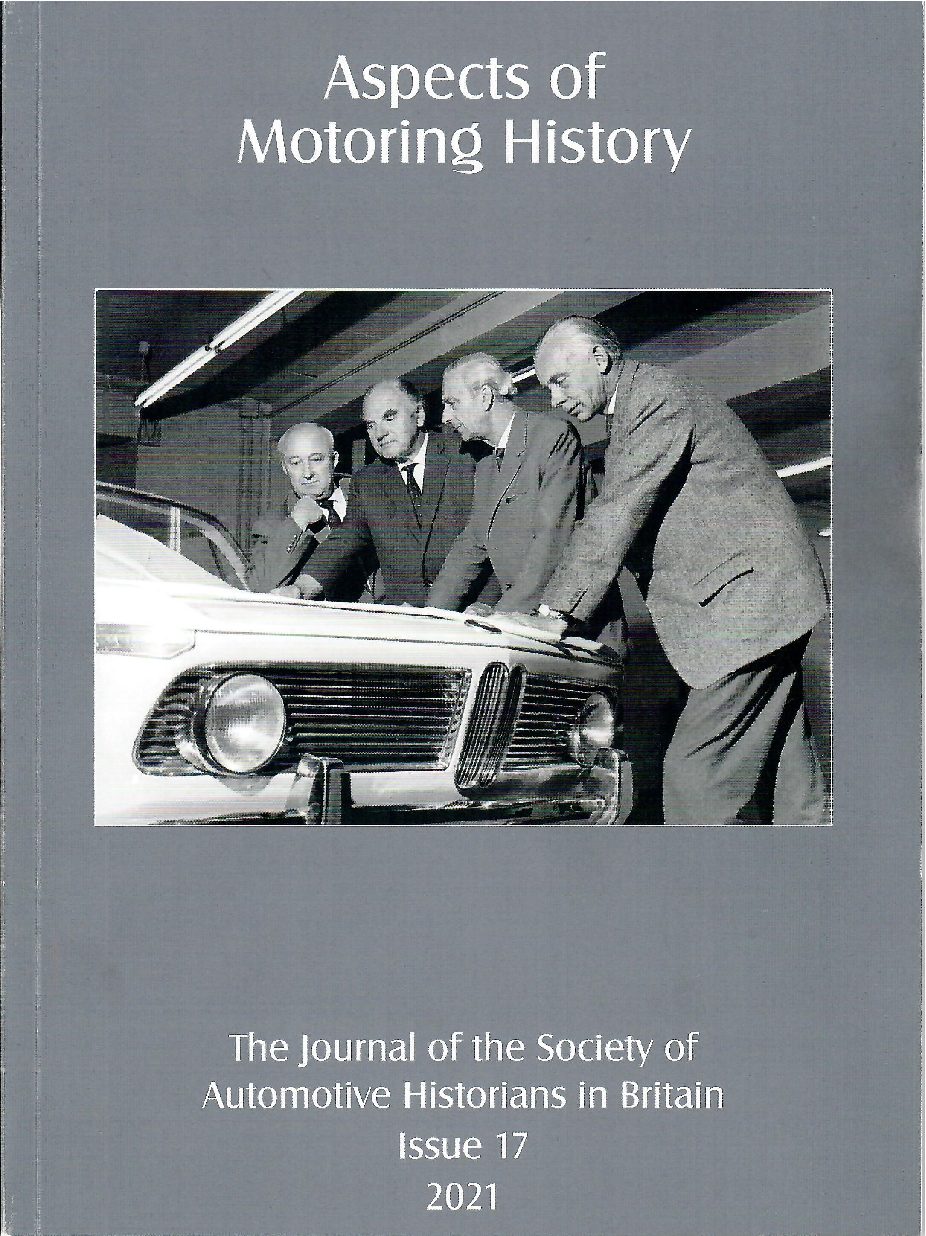
The Michael Sedgwick Memorial Trust is delighted to announce that the seventeenth edition of 'Aspects of Motoring History' (commonly referred to as 'Aspects') has been published by the Society of Automotive Historians in Britain ('SAHB'). This 'Aspects' is the eleventh edition of this annual publication to be supported by the Michael Sedgwick Memorial Trust. It is free to full-members of the SAHB and a limited number of copies are available directly from the SAHB at Aspects | (thesahb.com)
'Aspects', as its name suggests, comprises a selection of articles written by SAHB members (and others) on a variety of aspects of motoring history which do not in themselves merit a book but are worthy of recording and of interest to motoring historians everywhere. Issue 17, edited by Dr Craig Horner, features:
The editors of 'Aspects', both Craig and his predecessor, Malcolm Jeal, have been able to assemble a smorgasbord of motoring subjects from the articles submitted. This issue is no exception, starting with Peter Card's personal recollections over the last forty years of the late Michael Worthington-Williams ("MWW"). Peter Card, chairman of the MSMT first came across MWW when the latter was running the veteran and vintage automobile sales for Sotheby and Co. This instigated a friendship which has continued until MWW's recent passing and Peter is able to chronicle the contribution made to the world of automotive history which was recognised in the 2018 award of an MBE to MWW. This is an account that gives a flavour not just of the achievements, but also MWW the man, an individual rarely forgotten by those fortunate enough to have known him.
Colour and trim design for automobiles is a subject that has not garnered as much attention as other aspects of design. Concentrating on the years 1960 to 1995, Oliver Bradbury discusses the social forces and matters of taste that drove the products on offer, from conservative beginnings, through the more gregarious 1970s, returning to more conservative designs thereafter. The influences of gender on design and customer appeal are also discussed from the top end Rolls-Royce to the universality of Ford products.
There have been many learned articles about the restoration of historic houses, emphasising that returning them to their original state may not be practical or desirable. The same does not apply to historic automobiles, where until recently the emphasis, in the U.S. at least, was to over-restore to better-than-new to wow the crowds at Pebble Beach or similar. There is a growing recognition that this sort of restoration does not give the true flavour of the cars as originally constructed and a more sympathetic restoration is desirable. David Cooper takes us on a journey to consider just three aspects of the restoration of a Bugatti Type 57 Atalante, showing the research involved to understand the state of the car at the moment in its history that it is being restored to. Once this has been done, the work to undo subsequent modifications and restore to the previous state using the techniques available at the time is outlined.
The number of cars manufactured in Germany and imported into the UK was at a very low level in the aftermath of World War I and the lingering anti-German sentiment of the 1920s. By the 1930s, the numbers started to climb, reaching a peak in 1937, and declining thereafter. This subsequent decline again centred on nationalist feeling, stoked by a number of assertions in the press about subsidies for German exports. Anders Ditlev Clausager explores the truth behind the allegations of subsidy, the numbers of vehicles involved and their manufacturers. As is so often the case there was a good deal of propaganda being disseminated so the truth has previously had a poor hearing.
The name of Fritz Fiedler has long been associated with BMW, and to those of us interested in the UK motor industry it is linked with his being brought to this country in the aftermath of World War II by the Aldingtons to work with Frazer Nash and Bristol on their development of BMW designs. This article fleshes out the full career of this important designer through to the neue klasse BMWs and his eventual retirement from a BMW transformed from its ruinous post-war state.
The chauffeur was a new breed of worker, taking over from the coachman. Whereas the latter's skills were largely shared by their employers, where they often had equal familiarity with the principles of caring for equines. Chauffeurs however were often the only ones in the household who could drive or maintain the cars in their care which gave them a unique position in the household. This lead to them often accompanying their employers on adventures and becoming more akin to companions in the select few cases. Craig Horner charts this progress through to the outbreak of the First World War which entailed so many soldiers being taught to drive and maintain vehicles that the novelty of being thus skilled was lost as the skill became commonplace.